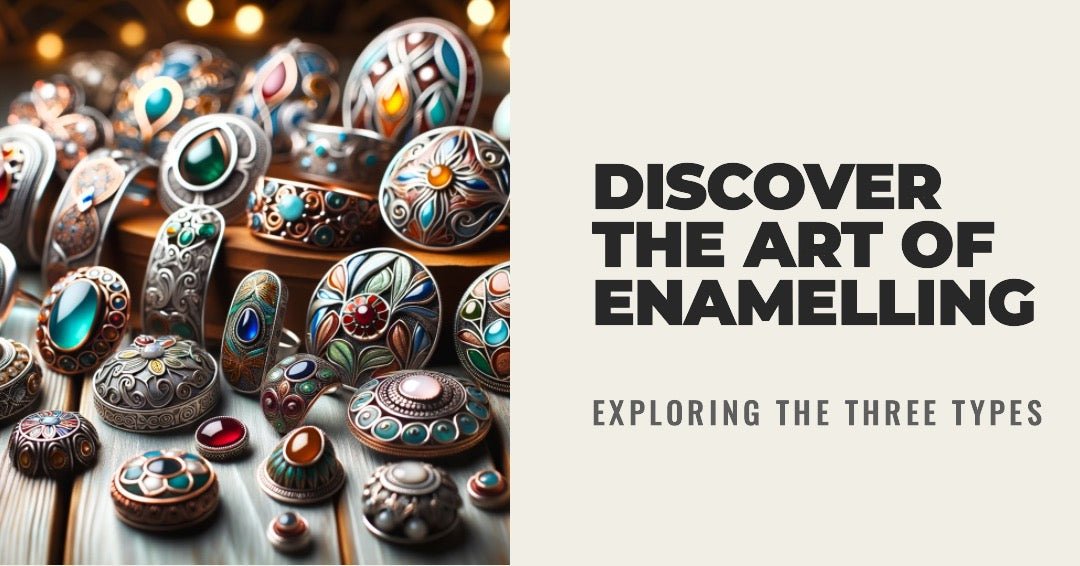
What are the three types of enamelling?
The ancient art of enamelling has continued to charm individuals and artists alike with its whimsical blend of fire, metal, and colored glass. Through a delicate balance of these elements, enamelling breathes life into metal, transforming it into vibrant works of art. Whether showcased in historic artifacts or contemporary jewelry, the allure of enamelled pieces is truly timeless.
Types of Enamelling Steels
The foundation of a spectacular enamelled piece often lies in the choice of steel used. The enamelling steels, categorized into three types, form the backbone of this age-old craft. Here’s a glimpse into these core types:
| Type | Carbon Content | Key Feature | Applications |
|---|---|---|---|
| Type 1 | Ultra-low carbon | Excellent enamelability | Suited for multiple firings during enamelling |
| Type 2 & Type 3 | Low carbon | Suitable for certain enamelling applications | Varies based on the specific type |
-
Type 1: Known for its ultra-low carbon content, Type 1 enamelling steel is a favorite among artists for its exceptional enamelability. The open coil annealing process it undergoes ensures it’s primed for applications requiring more than one firing during enamelling.
-
Type 2 and Type 3: These variants, with a slightly higher carbon content, expand the horizon of enamelling applications, offering a broader canvas for artists to work their magic.
This triad of enamelling steels provides a sturdy foundation, ensuring the enamelled creation not only dazzles but endures.
Enamelling Techniques
As we delve deeper into the realm of enamelling, a trio of techniques emerges, each with its own unique charm and methodology.
-
Champlevé:
- Description: This technique involves carving out hollows in the metal, which are then filled with enamel, creating a beautiful juxtaposition of metal and color.
- Usage: Due to its methodical nature, Champlevé is often utilized in creating intricate designs in jewelry and decorative pieces.
-
Cloisonné:
- Description: In Cloisonné, artists employ strips of metal to form cells on the metal surface, which are then filled with enamel, forming a captivating mosaic of colors.
- Usage: Its ability to create detailed and colorful designs makes Cloisonné a beloved technique for crafting decorative artifacts and jewelry.
-
Plique-à-jour:
- Description: Resembling stained glass, the Plique-à-jour technique involves adding enamel powder to cells backed by metal, which is removed post firing, leaving behind a shimmering and translucent enamel.
- Usage: This technique is revered for its ability to emulate the ethereal beauty of stained glass in enamelled creations.
Each of these techniques unveils a new facet of enamelling, offering a playground of creativity for artisans.
Types of Enamels
The journey from a plain metal surface to a vibrant enamelled masterpiece is paved with a rainbow of enamels. Essentially, enamels are the hues that breathe life into a piece, defining its character. Let's explore the two main types of enamels that artists commonly use to paint their metallic canvases:
Opaque Enamels
Opaque enamels are the bold statements in the enamelling world. Their non-transparent nature means they provide a solid color once fired, embodying a strong presence on the enamelled pieces.
-
Characteristics:
- Non-transparent.
- Available in a variety of colors.
- Can have a matte or glossy finish.
-
Applications:
- Ideal for pieces where a solid color is desired.
- Often used in contemporary jewelry to create bold and eye-catching designs.
Transparent Enamels
On the other side of the spectrum, transparent enamels invite light into the piece, creating a delicate play of shades and tones.
-
Characteristics:
- Transparency allows for layering, shading, and blending of different colors.
- Can be used with other media like silver and gold foils to create different effects.
-
Applications:
- Perfect for pieces aiming for a delicate, ethereal quality.
- Commonly used in artistic and decorative pieces to achieve a depth of color and light.
Combining Techniques and Enamel Types
The realm of enamelling unfolds into a vast playground when artists decide to blend different techniques and enamel types. This fusion not only broadens the creative horizon but also results in unique, awe-inspiring pieces.
-
Exploring Combinations:
- Combining Champlevé with opaque enamels for a solid, vibrant look.
- Merging Cloisonné and transparent enamels to create intricate, light-filled designs.
- Harnessing the translucence of Plique-à-jour with the bold statement of opaque enamels.
-
Achieving Unique Effects:
- The myriad effects achievable by mixing and matching techniques and enamel types.
- How the right combination can elevate a piece from beautiful to breathtaking.
Conclusion
The art of enamelling is a mesmerizing journey through a kaleidoscope of colors, techniques, and materials. As we've explored, the types of steel, enamelling techniques, and enamel types each play a crucial role in the creation of enamelled artistry. The fusion of these elements opens the door to a world of creativity, allowing artisans to craft pieces that resonate across ages and cultures.
So, whether you're an artist, a connoisseur, or someone newly enchanted by the world of enamelling, there's a boundless realm of beauty and creativity waiting to be explored. The story of enamelling is a colorful one, and each piece tells a tale of tradition, innovation, and artistic exploration.

